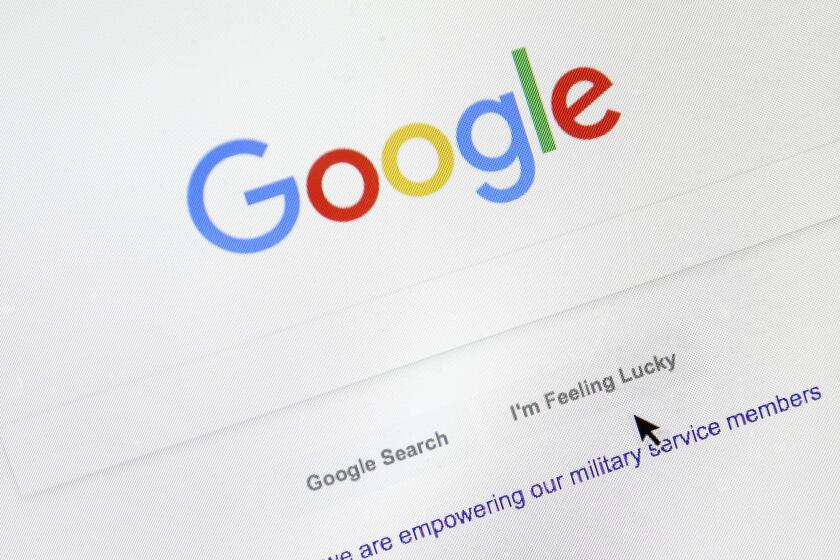Must Reads: From video game to day job: How ‘SimCity’ inspired a generation of city planners
Jason Baker was studying political science at UC Davis when he got his hands on “SimCity.” He took a careful approach to the computer game.
“I was not one of the players who enjoyed Godzilla running through your city and destroying it. I enjoyed making my city run well.”
This conscientious approach gave him a boost in a class on local government. Instead of writing a term paper about three different models for how cities can develop, Baker proposed building three scenarios in “SimCity,” then letting the game run on its own and writing about how his virtual cities fared.
He ended up getting an A. Playing “SimCity,” Baker said, “helped remind me of the importance of local government, which is what I ended up doing for a living.”
Today, Baker is the vice president of transportation and housing at the nonprofit Silicon Valley Leadership Group. He served as a council member in Campbell, Calif., from 2008 to 2016, a tenure that included two stints as mayor.
Thirty years ago, Maxis released “SimCity” for Mac and Amiga. It was succeeded by “SimCity 2000” in 1993, “SimCity 3000” in 1999, “SimCity 4” in 2003, a version for the Nintendo DS in 2007, “SimCity: BuildIt” in 2013 and an app launched in 2014.
Along the way, the games have introduced millions of players to the joys and frustrations of zoning, street grids and infrastructure funding — and influenced a generation of people who plan cities for a living. For many urban and transit planners, architects, government officials and activists, “SimCity” was their first taste of running a city. It was the first time they realized that neighborhoods, towns and cities were things that were planned, and that it was someone’s job to decide where streets, schools, bus stops and stores were supposed to go.
Bitten by the city-building bug
“I used to draw maps of cities for fun. I had no idea it was an actual career,” said Nicole Payne, now a program official for the National Assn. of City Transportation Officials in New York City. When she was 10, a librarian saw her drawings and told her there was a video game she should try.
“I wouldn’t be where I am today without ‘SimCity,’” she said.
Cuong Trinh played “SimCity” in a summer school class in junior high. Years later, after getting his undergraduate degree, he wanted to travel but because he was under 25, he had to rule out cities where he would need to rent a car to get around.
“That’s what really got me thinking about urban planning and ‘SimCity,’ where you put in trains, where you help people move,” said Trinh, now acting senior transportation planner for Caltrans in downtown L.A.
In more than a dozen interviews for this article, people who went from “SimCity” enthusiasts to professional planners talked about what they liked about the game: The way you can visualize how a single change affects a whole city. The ability to see how transit, livability and the economy are all connected. The fact that no one likes to live near a landfill.
Like Baker, many of the players who went on to become planners generally said they didn’t like to activate the game’s built-in “disaster” mode, which unleashes earthquakes, hurricanes or Godzilla on cities. They got satisfaction from building pristine cities so efficient they could run themselves.
I wouldn’t be where I am today without ‘SimCity.’
— Nicole Payne
Simplified simulations
Will Wright, the creator of “SimCity,” imagined when he designed the game that it would be interesting only to architects and city planners. But the first version wound up selling more than 1 million copies and changing the nature of gaming.
It popularized the simulation game genre and turned Maxis — a start-up launched in Orinda, Calif., by Wright and Jeff Braun — into an industry titan. Maxis capitalized on the game’s success, publishing “SimAnt,” “SimFarm,” “SimEarth,” “SimTower,” “SimLife,” “SimIsle” and “SimHealth” in its first decade, along with a handful of less popular non-simulation titles.
The company was valued at $125 million by the time it was acquired by EA in 1997. In 2000, the Redwood City studio released “The Sims,” which became one of the bestselling video games of all time.
Like most video games based on real-world jobs, “SimCity” oversimplifies some of the more mundane elements of urban planning. The game has never allowed mixed-use space. (In other words, the ubiquitous mid-rise apartment building with ground-floor commercial space currently taking America’s cities by storm does not exist.) There are no bike lanes. No iteration of “SimCity” has ever accurately depicted the staggering amount of a city’s square footage that’s spent on parking lots.
The lead designer of the 2013 version, Stone Librande, lent some insight in an article in the Atlantic: Parking lots are ugly and boring.

“That is a damning indictment, less of the game and more of urban planning,” said Aaron Brown, a community organizer and transportation activist based in Portland, Ore., who credits his early enthusiasm for transit to “SimCity.”
He spent many hours trying to build a city with no space for driving at all — only buses and trains. But like in real life, mass transit is expensive to build and maintain in “SimCity,” and some of the residents still want to drive, no matter how convenient your rail system is. He was never able to make it work. (Today, he’s a self-described “rabble rouser” working to halt a proposed freeway expansion.)
That issue speaks to a larger criticism of “SimCity”: Wright’s vision imposed an old-school approach to city-building, influenced by Robert Moses and the Chicago school. For those early urban planners, and in “SimCity,” there were binary solutions to problems. To lower crime rates, build police stations. If people complain about traffic, build more roads. If you need space to build a freeway or a stadium, raze working-class neighborhoods.
“A lot of the assumptions baked into that game are the normative assumptions that we need to be questioning,” Brown said.
Some of that includes examining what the game chooses to leave out: The environment wasn’t a consideration beyond air quality. The race of a city’s populace was largely a non-factor.
Greener, more global games
The next generation of “SimCity” players may have a different perspective.
The “SimCity: BuildIt” app, developed at EA’s Twentytrack studio in Helsinki, Finland, has 6.1 million players and more than 200 million lifetime downloads, according to EA. Inka Spara, the game manager, said the team has purposefully brought a more European perspective to the game.
Many of them played previous versions of “SimCity” in the early stages of app development. She said they recognized that Wright’s approach stemmed from a very American, very 20th century style of city-building.
It struck them how the buildings and maps all appeared American. So they added different types of architecture and topography from cities in Asia and Europe. As of the most recent release, players can build on a map with fjords.
“We’ve actually had a lot of fights about parking spaces,” Spara said, specifically, working with the artists to keep visible parking in their residential building models. Like their predecessors, she said, her team’s artists prefer the way the houses look without any parking. But it was important for her to maintain some level of realism.
Bike lanes are something they’ve considered adding to the game in the future, she said. “People just love biking here.”
In general, Spara said environmentalism and climate change are topics they’ve worked hard to address. You can play a “Green City” map in which residents have urban gardens and there’s less pollution. Solar power is now an option.
“We can see that those things resonate really well with folks that play the game,” she said.
Jarrett Walker is a consultant in public transit network design and policy who runs the blog Human Transit. Call him “SimCity”-critical: He has written at length about the game over the years, with posts such as “Did SimCity make us stupid?” and “SimCity will continue to mislead on transit.”
For people who become planners, Walker said, the “SimCity” games are a good introduction to the field. Those people will go on to understand what the game gets right and wrong. But the vast majority of players, whose exposure to city planning begins and ends with the game, might come to think “SimCity’s” approach is the only way to build a city. By masking the real-world effect of car-oriented transit and only allowing single-use zoning, he said, “SimCity” veers from entertainment into ideology.
Top of mind among city planners today is a set of problems not present in the game.
Jose Sanchez, an assistant professor in the architecture school at USC, tried to address some of “SimCity’s” oversights in his game, “Block’hood,” namely ecology and verticality, instead of sprawl.
“‘SimCity’ establishes a very fundamental literacy in systems,” Sanchez said. He hopes games like his will extend that literacy to some of the finer points of city-building.
He’s currently working on a sequel, “Common’hood,” which takes into account neighborhood-level problems such as homelessness and drug addiction.
Twitter: @jessica_roy







